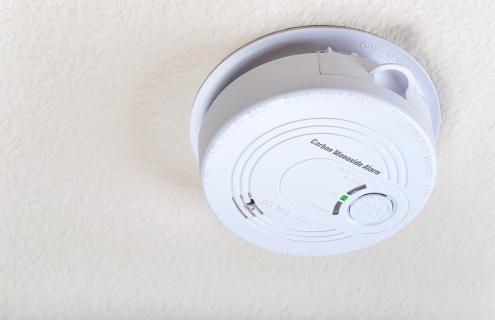
Carbon monoxide (CO) is a gas that you cannot see, taste or smell. It is of special concern as the winter approaches, as it can result from faulty heating appliances, cars left running in garages and the use of generators during power outages. CO is found in fumes produced any time you burn fuel in cars or trucks, small engines, stoves, lanterns, grills, fireplaces, gas ranges, or furnaces. CO can build up indoors and poison people and animals who breathe it. Each year, more than 400 Americans die from unintentional CO poisoning not linked to fires, more than 20,000 visit the emergency room and more than 4,000 are hospitalized.
The Injury Prevention Center at the Children’s Hospital at Dartmouth-Hitchcock (CHaD) in partnership with Safe Kids New Hampshire—a coalition led by Dartmouth-Hitchcock to keep kids safe—offers these tips to both prevent and identify carbon monoxide in your home:
- Make sure your home has a carbon monoxide alarm on every level, especially near sleeping areas, and keep them at least 15 feet away from fuel burning appliances, like wood stoves.
- If you need to warm a vehicle, remove it from the garage immediately after starting it. Don't leave a car, SUV or motorcycle engine running inside a garage, even if the garage doors are open. If you own a hybrid vehicle, and you keep it in the garage, double check that your car is definitely off. CO poisonings have occurred from hybrids that have the gasoline part of the engine turned on and fill the garage and home with CO.
- Check your furnace exhaust vents on the outside of your home to make sure they are clear of snow or any obstruction.
- Never use your stovetop or gas oven to heat your home.
- Do not use a grill, generator or camping stove inside your home, garage or near a window.
- Use generators and any gas-powered equipment outside, at least 20 feet away from doors, windows, and vents.
- On the outside of your home, make sure vents for the dryer, furnace, stove and fireplace are clear of snow and debris.
- If your CO alarm sounds, immediately move outdoors or to an open window or door for fresh air, and be sure to account for everyone in your home. Call 911, or the fire department, and remain outside or by the open window until emergency personnel arrive to assist you.
The most common symptoms of CO poisoning are headache, dizziness, weakness, upset stomach, vomiting, chest pain, and confusion. CO symptoms are often described as “flu-like” but without the fever. It’s important to know that children process carbon monoxide differently than adults, they can be more severely affected by it and may show signs of poisoning sooner.
The Dartmouth Health Children's Injury Prevention Center and Safe Kids New Hampshire want all families to be aware of the risk of carbon monoxide poisoning, especially for children and the elderly. As part of this effort, VT/NH Carbon Monoxide Alliance addresses carbon monoxide issues in our region. For more information about the alliance call the Injury Prevention Center at 603-308-2253.